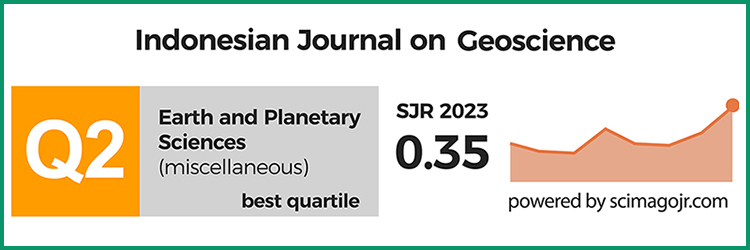Analysis of Maximum-Rainfall-Infiltration-Induced Slope Stability Using the Transient Rainfall Infiltration and Grid-based Regional Slope-stability Model in Cililin, West Java, Indonesia
DOI:
https://doi.org/10.17014/ijog.9.2.263-278Keywords:
landslide, slope stability, rainfall-induced, TRIGRS model, CililinAbstract
DOI:10.17014/ijog.9.2.263-278
Landslide is one type of geological disasters that frequently occurs during the rainy season. Rainfall infiltration can cause soil saturation that increases the positive pore water pressure, disturbing the slope stability. Therefore, knowledge of future landslide-triggering rainfall is required for mitigation efforts and reducing the risk of landslide hazards. This paper presents slope-stability modeling in the Cililin area using the well-established infinite slope model called the transient rainfall infiltration and grid-based regional slope-stability (TRIGRS). The modeling used the rainfall data obtained from the statistical analysis of the maximum daily rainfall by using the Gumbel distribution. The present study applied six scenarios in the modeling. Scenario I is the initial condition without rainfall, showing the slope stability influenced by topography, slope, and soil characteristics. TRIGRS modeling involves rainfall infiltration in scenarios II, III, IV, V, and VI. The maximum rainfalls used in the modeling are 66, 76, 101, 120, and 132 mm/d, showing that rainfall infiltration affected the slope stability. The result indicates that rainfall triggered an increase and expansion of the area distributions critical to the slope stability.



















